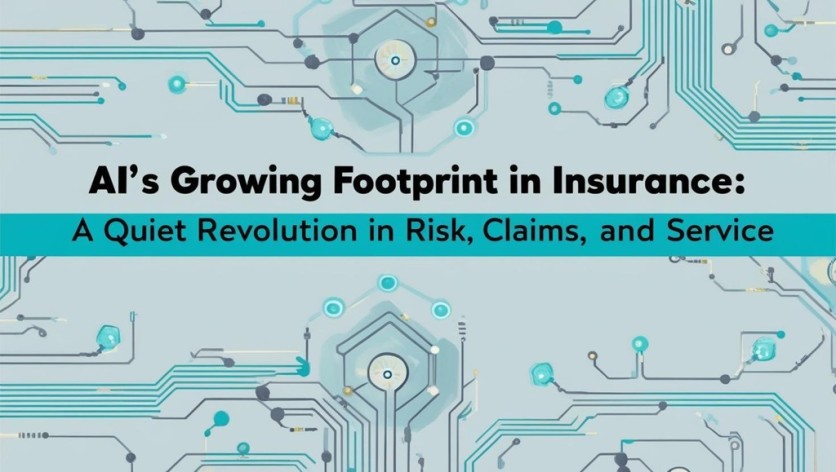
A quiet yet sweeping revolution is underway in the insurance industry, driven by artificial intelligence's potential to redefine operational efficiency and customer experience. This transformation is explored in depth by Principal Software Engineer Maruthi Prasad Gundla, whose insights highlight how AI is reshaping the foundational pillars of modern insurance risk assessment, claims processing, customer service, and fraud prevention through data-driven innovation and scalable automation.
Rethinking Risk: Underwriting Enters the AI Age
The once manual and time-intensive underwriting process is undergoing rapid transformation, as AI systems streamline risk assessments with scale and precision. Insurers now use machine learning to analyze vast datasets in real time. This capability reduces underwriting decision time from days to minutes while cutting costs and boosting consistency.
AI empowers insurers to incorporate nontraditional data, including telematics, browsing behavior, and social interactions, creating multidimensional risk profiles. These insights allow for better segmentation, pricing, and customer targeting. Predictive modeling identifies patterns in past data to anticipate claims, helping insurers design more resilient product portfolios. The constant feedback loop between prediction and outcome continuously improves accuracy, making AI an indispensable underwriting ally.
From Paperwork to Precision: Automating Claims Processing
Claims processing, a key customer interaction, has long been inefficient. AI is changing this through intelligent document processing. Automated systems now extract and validate information from claims quickly, reducing delays and human error.
Damage assessment automation is another leap forward. Using computer vision, insurers can analyze images to estimate repair costs, often without human input. These algorithms rival adjusters in accuracy and allow claims to be settled in minutes. Claims triage further enhances efficiency by routing simple cases to automation and flagging complex ones for human review. This ensures high-priority cases receive timely attention, while low-risk ones are resolved seamlessly, boosting both speed and satisfaction.
Always On, Always Personal: Customer Service Reimagined
Today's customers expect 24/7 service, and AI delivers. Virtual assistants now handle up to 80% of inquiries, including policy questions and payments, without human help. These systems provide consistent service across websites, apps, and voice platforms, minimizing wait times and improving access.
AI's personalization capabilities stand out. By analyzing prior interactions and preferences, AI creates tailored responses that boost engagement and retention. Customers feel seen and understood, which strengthens brand loyalty. Properly trained models and clean data are essential, especially given regulatory demands. These systems allow human agents to focus on more complex cases while AI handles the routine, ensuring a more balanced and responsive support system.
Exposing the Invisible: AI in Fraud Detection
Fraudulent claims remain a costly challenge, but AI offers powerful tools. Machine learning models detect anomalies in claims data that humans might miss. These systems adapt continuously, staying ahead of changing fraud tactics and identifying irregularities in real time.
AI also reveals connections between claimants and providers, exposing fraud rings that operate across regions and product lines. Behavioral analysis detects subtle cues in language, timing, or formatting that may signal deceit. When combined, these tools create a multilayered defense that boosts fraud detection accuracy while reducing false positives. Ultimately, this improves operational trust and helps insurers maintain financial integrity.
Building the Foundation: Implementation with Intention
Success with AI requires a strategic plan. Insurers should first automate high-volume, rule-based processes to demonstrate early wins before scaling. Starting small with measurable goals helps build confidence in new technologies.
Strong data infrastructure is crucial. Clean, accessible data is the foundation for effective AI. Many insurers modernize systems to break down silos and ensure compliance with evolving regulations. Pilot projects help refine strategies, while collaboration between AI and human expertise ensures the best outcomes. Continuous learning keeps models effective as business conditions change, customer needs shift, and fraud strategies evolve, ensuring long-term success and agility in a competitive environment.
In conclusion, the integration of AI in insurance is a fundamental shift in how the industry operates. By applying AI to underwriting, claims, customer service, and fraud detection, insurers can achieve transformative improvements in both efficiency and customer satisfaction. As Maruthi Prasad Gundla explains, this shift isn't just about adopting new tools; it's about reimagining service delivery through strategic, data-driven innovation. The future belongs to those insurers who not only embrace AI but embed it thoughtfully into every facet of their operations.
ⓒ 2025 TECHTIMES.com All rights reserved. Do not reproduce without permission.





